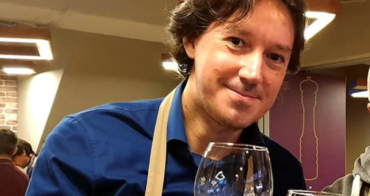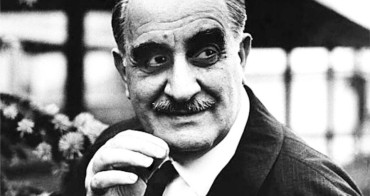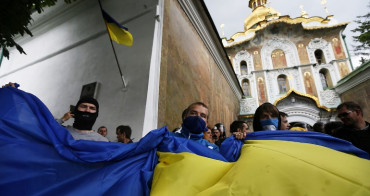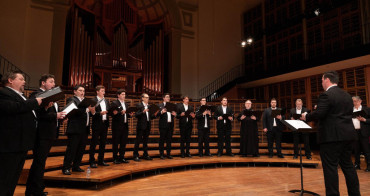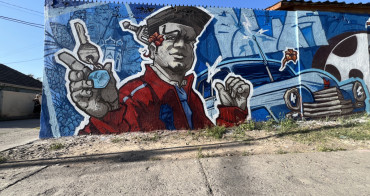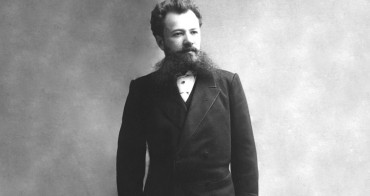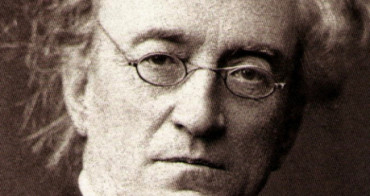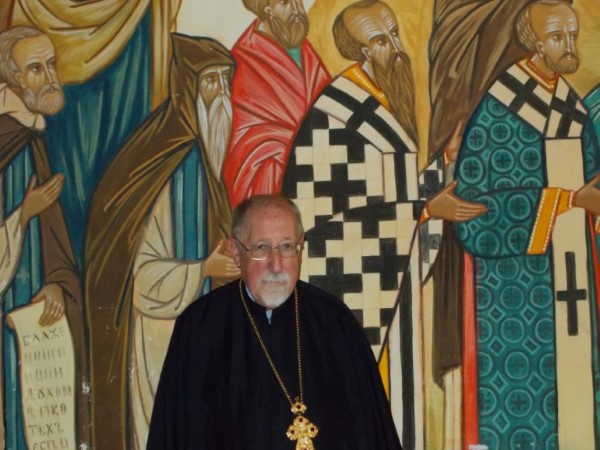
Father Claude Robinet has an exceptional biography. He began studying Russian in Belgium and Belarussian in Rome. In Belgium he study theology and joined the Jesuits. In Rome he worked for Vatican Radio and became head of Saint Anthony Abbot on the Esquiline, the Russian Catholic church. He also wrote texts for Pope John Paul II. The fates of an enormous number of Russians – Catholic and Orthodox, communists and aristocrats – have been intertwined with his life.
– How did you begin to study the Russian language and take interest in Russian culture?
– I was born in a small town in the south of Belgium. The school there had a library. There weren’t very many books in the library and I read one book over and over again. It was a book of Russian fairytales. I also had a small radio. Once I heard a liturgy on the radio, and my father told me that the liturgy was in Church Slavonic. He knew because he spent five year in a German prison camp, and there were Serbs and Russians there.
When I was 17 I began to visit the Chevetogne Abbey (l'abbaye de Chevetogne). This is a Catholic monastery but the services are held in Church Slavonic and Greek. I liked that and thought that I should become a monk at this monastery. But then I began by studies at the philosophy department of the University of Namur.
I also attended Russian language classes. There was an old immigrant there, Prince Mstislav Starosvetsky. He taught Russian. We had this textbook were it was written how you should greet your teacher. I looked at what was written in the textbook and said to Mstislav Starosvetsky: “Good evening, comrade teacher!” He replied: “Let this be the first and last time you say that!”
– How did your life in Rome begin?
– I joined the Jesuits and worked for a year in Brussels at a school for disabled children. And then in 1976 I was sent to study in Rome. After a year I transferred to another seminary called Russicum. This is a Russian seminary established by the pope. At Russicum we held service in Church Slavonic, as Pope Pius XI once said: “No more, no less and no different than in the Russian Orthodox Church.”
– How did you start working at the Vatican Radio?
– After my studies I spent a year in France. And then I was sent straight to the Vatican Radio to work for the Russian service. At first I simply edited information but then two years later I became deputy editor-in-chief. I worked for many years in this role, and then in 1996 the head of the Belarussian service died. I was offered to take his place. But I did not know anything in Belarussian. I slowly began studying texts… It was not a simple task, as the stresses are not like in Russian.
When I started working for the radio in 1982 there were few contacts with Soviet Russia. It was difficult because there was little information. The radio was jammed. For example, when I started talking about Father Gleb Yakunin the signal was immediately jammed. They even jammed the signal after Gorbachev came to power. Not the entire program – just the news.
– Tell us a little about your parish in Rome.
– In 1982 I was appointed deputy head of the Saint Anthony Abbot on the Esquiline. This is a Russian Catholic church. The head of the church was Father Antony Koren, a Slovenian. This is a small parish. At the beginning it drew Russian emigrants of the first and second waves. General Rossi was a member, and later on his gravestone they even wrote “Generalissimus”. I led his funeral service. Many of them were Orthodox believers.
Some of them for various reasons adopted Catholicism. That was in the 1930s. But they did not write that the Orthodox converted to Catholicism. They wrote that they adopted the Ecumenical Church, Ecumenism. In my times this did not happen. The Orthodox who attended Saint Anthony’s remained Orthodox.
A small Russian monastery was established in Rome: the Convent of the Assumption (Monastero Russo Uspenskij). I often lead services there. The head of the convent, Mother Ekaterina, was also from a noble family. She talked about playing with Wrangel’s children. Nuns for the convent were sought out from all over the world. Some remained there, some left, and some returned to the Orthodox Church. Such is life…
– Who also served at the Convent of the Assumption?
– There was Mother Arkhangela. She was from Kursk. She was from the second wave of immigrants. She would say: I am a young communist. She knew all of the Soviet songs. One priest asked: how is it you are a nun and you sing those songs? Later she wrote her memoires, read them on the radio and cried when she spoke about her father.
There was always a connection between the Convent of the Assumption and St. Anthony’s, where I served regularly. In 1985 I became the head of this church. I did baptisms, performed funeral services, married people… from 1985 to 2012.
– What kinds of people attended?
– There were Russians who had not been baptized during Soviet times. Several Muslims converted and were baptized. If someone wanted to get baptized or married in my church rather than at Orthodox churches, I told them that they also must respect the Orthodox Church and not criticize it.
I remember how I baptized the son of one teacher. That was a very interesting baptism. Her godmother was Natalya, the daughter of Nikolai Romanovich Romanov, and her godfather was a communist who did not even both to put on a tie for the baptism.
– How did you work with the parishioners?
– I think that my specialty at this parish was mixed marriages. Girls would come to Italy to work, and Italians love blondes. And then they would need to get married. So it often was a compromise: to get married at our church. Because the parish is Catholic while the service is exactly the same as the Orthodox service. And I serve as a Russian priest, and also say a few things in Italian.
– You translated for Pope John Paul II. How did that work?
– On several occasions I prepared texts in Russian so that the pope could read them. One time I even recorded him a tape. And there was one phrase that was difficult. He understood it but it was difficult for him to repeat it. So he asked me to record this phrase several times.
Once I did not know that I was going to be helping him, but one priest came to me and said: you need to go to the pope immediately. I was not even dressed as a priest and I thought it was a joke. I didn’t even know the text, but when they told me I had to go I did what I could and wrote the text. The pope was receiving some bishops and at one point I was invited. I entered the library and was so embarrassed that I turned red. The pope understood this. I stood behind him so that he would not see me. He read his speech with expression and gests. I remember that he had a little difficulty pronouncing rasprostranyat [to disseminate].
<…>
Daria Alexander
Source: L’Observateur russe (Russkiy Ochevidets)
